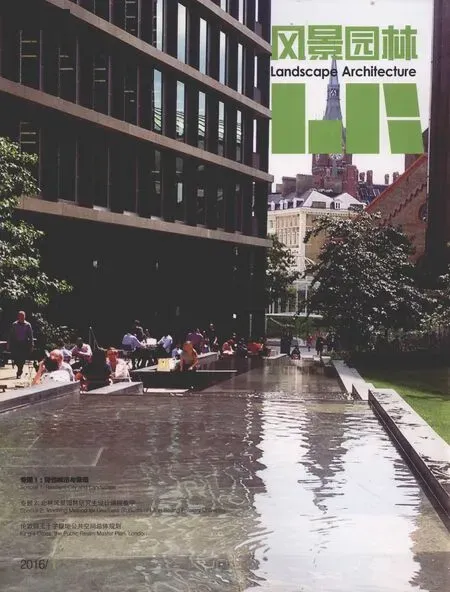刊首语
刊首语
最近一年多我一直在做诸暨市高湖的规划和研究。每到雨季,诸暨的河流便迅速上涨,贯穿诸暨全境的浦阳江会成为一条城市上的悬河。一到特殊的丰雨年份,诸暨就面临严重的安全隐患,官民必须日夜巡视江堤,严防死守,诸暨全境都弥漫着紧张的气氛。这些年防洪标准不断升级,江堤数次加高,但洪灾威胁始终无法解除。规划中的高湖位于浦阳江东岸,这是一个具有弹性的人工湖泊,可以在浦阳江水位上涨时引江水入湖,削减洪峰,同时湖面面积相应增加,最多可增加1km2的水面。建成的高湖将实现对江水的调配,使得浦阳江水位保持在安全范围之内,永远消除城市的水患威胁,同时高湖也是一个生态的湖泊,提供城市良好生态环境的支撑,也是市民休闲、运动和游览的胜地。
高湖的规划思想来自古人的智慧,历史上中国人就顺应自然条件,梳理水系,修筑陂塘水利系统,目的是雨季调洪蓄水,旱季储水灌溉,同时为民众提供饮用水源,也提供便利的船运交通。杭州西湖实际上就是一个水利工程,是一个陂湖。西湖创造的不仅是美丽的风景,她是保护杭州城市安全,保证市民正常生活和生产的最重要的基础设施,西湖的经营充分映射出古人对水资源系统地管理和利用的思想。
在诸暨北部的整个宁绍平原,这样的陂湖曾经数不胜数,大的陂湖就有鉴湖、小江湖、白洋湖、慈溪湖、东钱湖、广德湖、湘湖、白马湖和夏盖湖等等。这些湖泊由于强大的蓄水调洪能力,使得整个宁绍平原能够旱涝保收,免受自然灾害的威胁,成为美丽富饶的鱼米之乡和人文荟萃的地方。这些水利工程的营造让历史上的宁绍平原具有抗击自然灾害的能力,用今天的观点来看,宁绍平原就是人类规划和建设的具有弹性的区域,那里的城市,如绍兴和宁波等就是具有弹性的城市。
今天的土地利用方式已与古时有很大不同,城市也更加综合复杂,人口密集,社会经济活动高度集聚,城市在变得越来越强大的同时,在某些方面也显得越来越脆弱,越来越不具有适应环境变化影响的弹性。现代城市在面对自然突变时似乎并没有强大的抵御能力,雨洪灾难、热岛效应、空气污染、生物量减少、地下水位下降等等,城市的生态问题越来越尖锐,人们意识到,通过各种工程化的手段解决城市问题的方式已经完全失效,于是借助生态学等学科理论,参考历史上城市营造的智慧,一些新的城市规划和建设思想应运而生,其中之一就是“弹性城市”。
“弹性”(resilience)一词是生态学领域中的一个概念,指生物的一种自我修复能力。这种能力使它们在遇到一定的外在条件变化或冲击后,能适度地去抵制干扰,保持或重新回到平衡状态。
20世纪90年代以来,弹性的概念逐渐被应用到城市规划研究和实践中,形成了“弹性城市”的理念,即城市是一个复杂的生态系统,城市的安全建立在其应对外界干扰的能力上,城市一旦受到不利的影响和灾害的威胁,应该具有抵御的能力,而不利影响的结果一旦发生,城市应该具有较快的恢复能力。
只有具备完善的城市生态系统,弹性城市才有可能实现。城市生态系统由城市所依托的自然环境和人们规划建设的生态工程共同组成,这样的系统就是城市的蓝色/绿色基础设施, 是具有弹性的景观,它们为城市的生态安全提供关键性的支撑,使得城市具有应对环境变化的自适应性、调节性与低干扰性,从而提高了对环境变化的控制能力。
弹性城市及弹性景观的理念为降低城市脆弱性、提高城市适应力与恢复力提供了新的研究视角和规划设计思路。今天风景园林师应该积极主导蓝色/绿色基础设施的规划、设计与实施,在城市中构建弹性的生态系统,以平衡自然与人工的关系,达到城市系统的自适应,帮助城市这个日益庞大、复杂而脆弱的集合体顺利、平安地抵挡每一次冲击与伤害。
本期的专题之一就是“弹性城市与景观”。
Recently, I have been doing the high lake planning and research at Zhuji City more than one year. Every rainy season, the river water rise quickly, run through all the territory of Zhuji and soon the Pu Yang River will become a suspended river over the city. As the special abundant rainning time, Zhuji City would face the serious security danger and must pay much attention to patrol management towards the river banks, which filled all across citizens with the tension. Flood control standard is improved again and again, river banks build higher and higher,but the flood threat still cannot relieve. The high lake is a resilient man-made lake,where plans to locate on the east of Pu Yang River. Help guide the more water into the lake as the water level of Pu Yang River goes up and weaken the flood peak. Meanwhile, the lake surface area accordingly get larger, could increase 1 km2 at the most. The high lake will finally accomplish the deployment of river water,help the water level keep in the safe range and eliminate urban flood threat forever. The high lake is also an ecological lake, support the urban ecological environmentbuilt and provide a recreational public resort.
The idea of high lake planning is inspired by the wisdom from our ancients. In the history, Chinese used to adapt to natural conditions, construct the drainage and develop sloping land and water conservancy system. Save flood water at rainy season for water irrigation at dry season, provide drinking water for people and also facilitate the shipping transportation. The famous west lake of Hangzhou is actually a water conservancy project. The west lake not only creates beauty for the city, also guarantees the Hangzhou safety. She is the most important infrastructure for people normal life and production. The west lake fully reflects the ancients how to systematically manage and utilize water resources.
There are many such lakes over whole Ningshao Plain in the north of Zhuji,like Jian Lake, Little Jiang Lake, Baiyang Lake, Cixi Lake, Dongqian Lake, Guangde Lake, Xiang Lake, Baima Lake and the Xiagai Lake. These lakes have powerful capability of reservoir flood, make the whole Ningshao Plain security, to keep from the danger of natural disasters. This is a beautiful rich land of resources and also multi-cultural place. These water conservancy construction projects give Ningshao Plain the ability of fighting against multiple hazards. In fact, Ningshao Plain have been an exactly piece of resilient area that human plan and develop,where the city, such as Shaoxing and Ningbo City are all resilient city.
Current approach to land use is quite different with the old days. Cities are now even complex and crowded, include high concentration of social and economic activities and turn out more competitive. At the same time, it also appears more vulnerable, that is, city would not withstand and recover quickly from the environmental changes. Modern city does not have a strong capacity to resist natural impacts or perturbations. Such perturbations and disturbances can include the flooding, windstorms, difficult heat island effect, heavy air pollution and ground water levels fall, etc. The city's ecological problems are fairly obvious. People realize that various means of engineering approaches to solve have completely been failed. Then, we require help from ecology and other disciplines theory or the wisdom of ancients to develop city. Thus, some new urban planning ideas to be brought forward, building “a resilient city” is one of them.
The concept of “resilience” was first introduced in ecological systems. Resilience is the capacity of living things to resist damage and recover. That is the capacity of a system to reorganize and tolerate while undergoing changes or disturbances so as to still retain essentially the same function, structure and identity.
Since the 1990 s, the concept of resilience gradually is applied to the urban planning research and practices. Then, it formed the idea of “resilient city” that is to say, treat the city as a complex ecosystem. The safety of city is based on its ability to cope with external interferences. City should have the adaptive capacity to resist once under the extreme threat of impacts or disasters. And the results in the event of adverse effects, the city should have fast recovery capability from crises.
Only establish a complete urban ecological system could fulfill a resilient city. Urban ecological system relies on the stability natural environment and the planning and construction of ecological engineering projects by people. Such urban system needs blue/green infrastructures and resilient landscapes, to provide critical support for urban ecological security and strengthen the urban adaptability to respond to environmental changes and less influenced, so as to improve the resilience.
The ideas of building resilient city and resilient landscape help to reduce the vulnerability of city, to improve adaptability and resilience of city, also provide a new research perspective for urban planning and urban design. Today's landscape architects should actively lead blue/green infrastructure planning and build up resilient eco-systems for the city, to well balance the relationship between nature and human. Finally advance urban system’s adaptability to make city this increasingly sophisticated and fragile complex safely smooth to resist the impacts and damages every time.
One of special in this Landscape Architecture Journal is exactly on this topic,“resilient city and landscape”.
WANG Xiang-rong January 18, 2016
PREFACE

